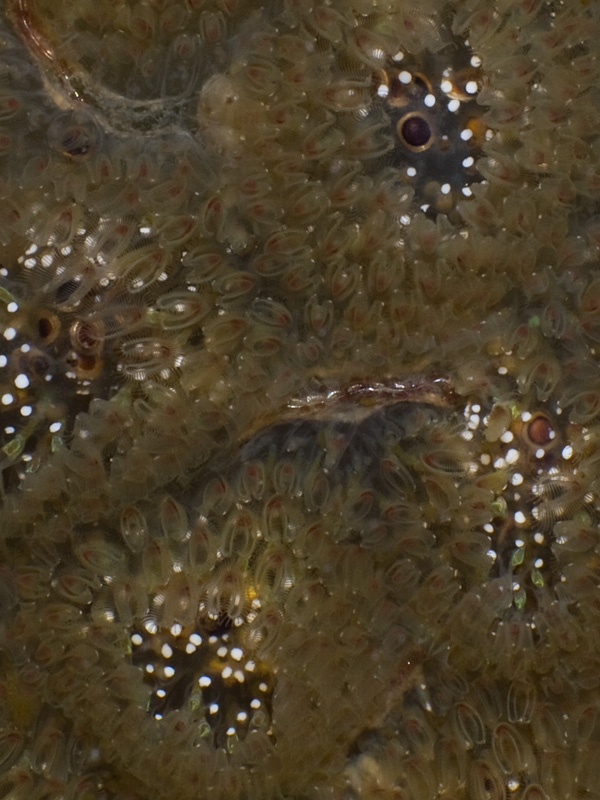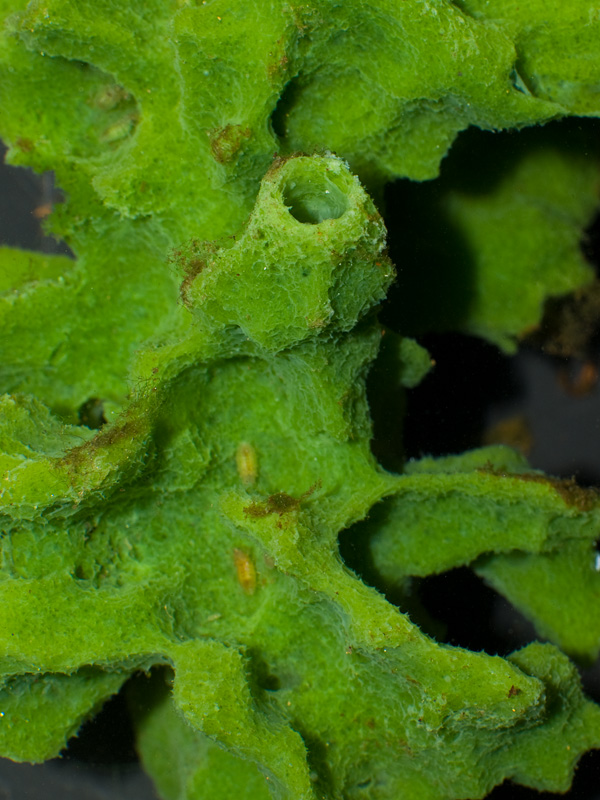Freshwater Oddity (Part 2)
Wednesday, August 26th, 2009
A close up of a colony of Pectinatella magnifica zooids; a freshwater bryozoan.
Pectinatella magnifica is another example of a coral reef cousin that I found living in a freshwater lake in Maine, alongside the previously featured Spongilla sp. sponge. From a distance, the colonies that these animals create appear as large jelly-like masses that might be confused with frog’s eggs (see photo below). They are typically found encrusting submerged tree branches, plants, and rocks. Most bryozoans are found in saltwater, but a few species such as P. magnifica are found in freshwater habitats. It would be forgivable to call the individual animals ‘polyps’, as they are superficially coral-like. However, unlike cnidarian (coral-like animals) polyps, bryozoan zooids have a complete digestive system with a separate mouth and anus, whereas cnidarian polyps have a single mouth/ anus opening.
If you look closely at the macro photo you will notice a couple of worms that are living in casings between the valleys that separate sub-colonial groupings of the zooids. The worms were wriggling constantly, most likely in an effort to create a water flow through their tubes that would draw in food items. It would be interesting to know whether these worms are specific only to Pectinatella magnifica, or whether they are simply opportunistic.

The full-sized colony of Pectinatella magnifica looks and feels a lot like a mass of frog’s eggs. It has encrusted over a submerged pine twig.

